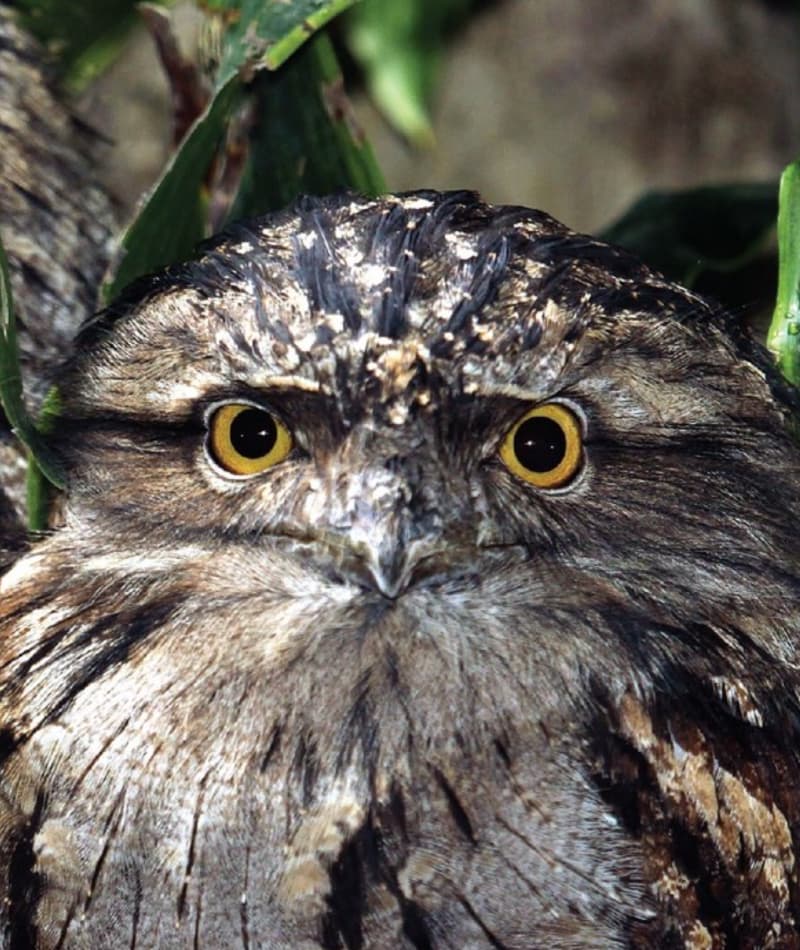
Tawny Frogmouth
Podargus strigoides
Did you know?
- Tawny frogmouths are a part of the Podargidae family, which they share with other frogmouths.
- They are named after their wide, frog-like mouths.
- They live in various habitats in Australia and Tasmania.
- They are often mistaken for owls, but there is no close relation between the two species.
- A female lays one to three eggs per clutch.
Adaptations
Tawny frogmouths are masters of disguise! Their brown, black, and grey coloration looks remarkably like a tree branch when it roosts in trees during the day. They have large mouths and triangular beaks, which help them capture insects, mice, frogs and similar small animals. Their primary feathers are frayed, allowing them to fly silently.
Young and Family
Tawny frogmouths will mate for life! They form monogamous pairs and often use the same nesting site every year. Both the male and female will help incubate, raise and defend the chicks. Incubation last about 30 days, and chicks leave the nest between 25 and 35 days after hatching.
Threat Level
- Unknown
- Common
- Near Threatened
- Threatened
- Endangered
- Critically Endangered
- Extinct in the Wild
Common
The Tawny Frogmouth is widespread and abundant.
Range
Australia and Tasmania
Habitat
Forests, open woodlands, near human settlements

We care about tawny frogmouths
The Saint Louis Zoo participates in the Species Survival Plan® for
tawny frogmouths. This is a cooperative breeding program, with a number
of zoos working together to ensure the survival of this species. We also
support them in the Bird House at the Zoo. Learn more about how we are
helping wildlife around the world:
Dedicated to Conservation
Find this animal in Historic Hill

SAINT LOUIS ZOO ZONE
Historic Hill
Historic Hill is a lovely stroll through one of the oldest parts of the Saint Louis Zoo. From the 1904 World’s Fair Flight Cage to the Spanish architectural flavor of the 1920s in the Bird House, Primate House and Herpetarium to the finishing touches of our thoroughly modern exhibits, this area of the Zoo has a unique ambiance and a nostalgic history that make it a great destination.

